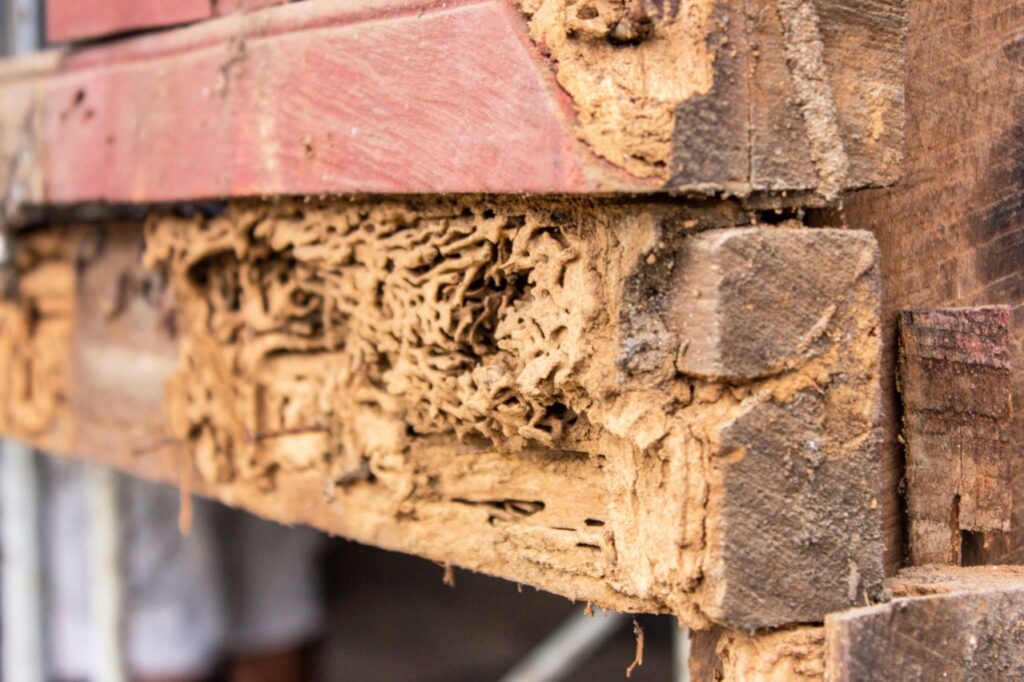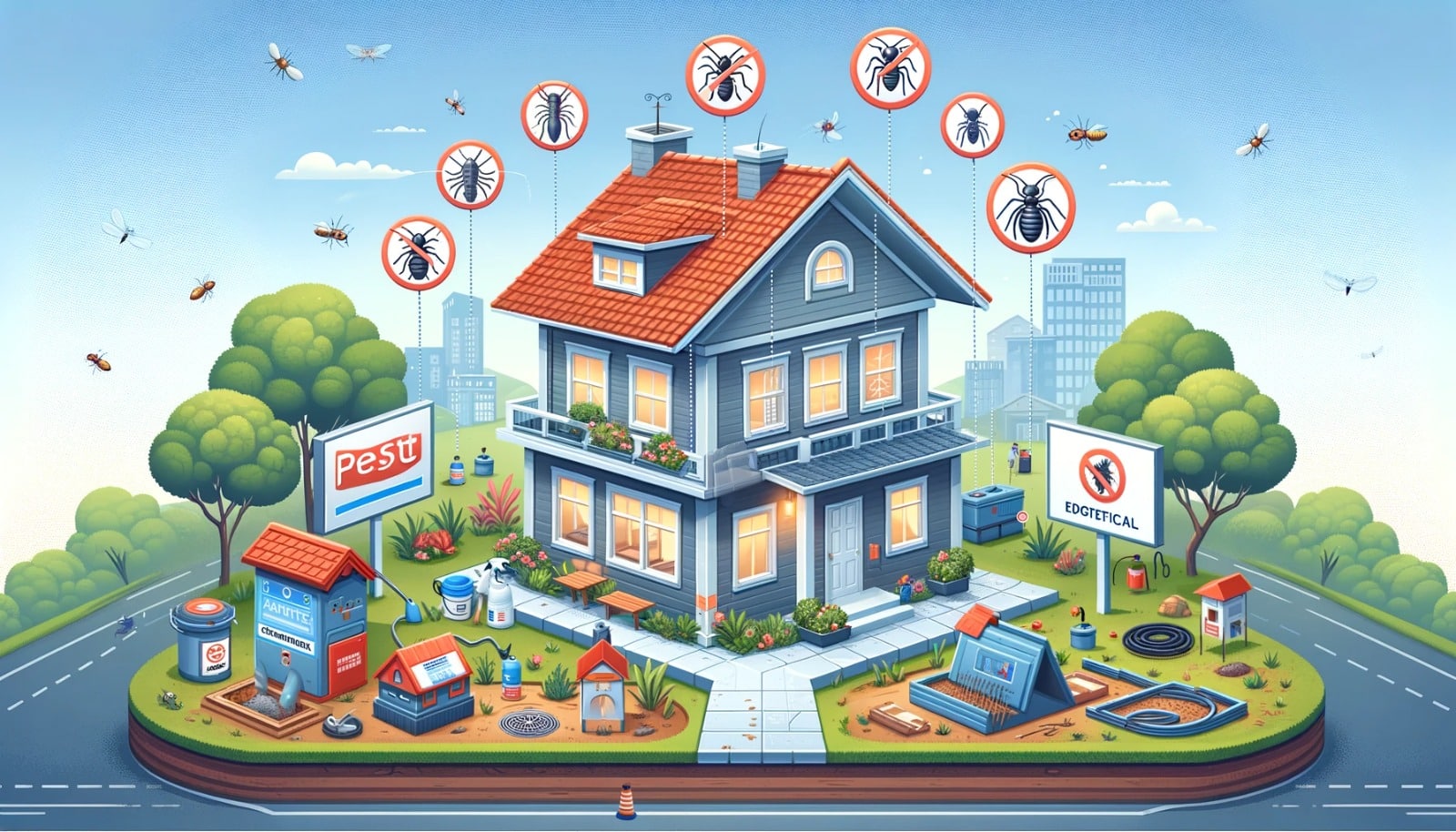When it comes to property management, there are numerous responsibilities that weigh on the shoulders of property managers. Whether it’s maintaining the structure of a building, ensuring the safety of tenants, or adhering to regulations, there’s always something that requires attention. Amidst this cacophony of tasks, one issue that can easily be overlooked is pest and termite control. However, neglecting this area can lead to expensive damages and disgruntled tenants. Let’s delve into the significance of proactive pest and termite control for property managers and why it should be at the forefront of your property maintenance strategy.
The Invisible Threat to Your Property
While pests like rats or cockroaches are easy to spot (and detest), termites operate covertly. These silent destroyers, hidden from plain sight, gnaw through wood, wallpaper, plastics, and even some metals. Their damage is not just superficial; they can compromise the structural integrity of a building. For a property manager with numerous properties under their belt, this translates into a potential nightmare – both in terms of repair costs and tenant satisfaction.
Pests, on the other hand, can pose significant health risks. Cockroaches, for instance, can be carriers of various diseases and are known to trigger allergies and asthma. Rats can spread dangerous diseases like leptospirosis or the Hantavirus. Therefore, it’s not just about aesthetics or structural integrity; it’s also about the well-being of the residents in your properties.

Modern Pest Control, Simplified.
The Cost-Benefit Analysis of Proactive Pest Management
Think about it this way: would you rather spend a small amount now on preventative measures, or a significant amount later to remedy the damage? When you look at the financial aspects, the cost of regular pest and termite control pales in comparison to the potentially huge expenses associated with rectifying pest or termite-inflicted damages.
Let’s take a simple example. A single termite colony can eat through a foot of 2×4 wood in just six months. Now, extrapolate that to multiple properties and potentially multiple infestations. The repair costs can skyrocket. Proactive pest control, on the other hand, can help detect early signs of termite infestation, thereby preventing such large-scale destruction.
Moreover, let’s not forget the intangible costs. Tenant satisfaction is a significant factor in the success of property management. A pest-infested property can tarnish your reputation, making it harder to find and retain tenants.
Integrating Pest & Termite Control into Regular Maintenance
For many property managers, maintenance schedules are already packed with tasks. From plumbing checks to landscaping, there’s a lot to oversee. Yet, including pest and termite control into this regular routine can save a lot of headaches in the long run.
It’s not about reacting to a pest sighting or a tenant’s complaint. Instead, be one step ahead. Schedule regular inspections by professionals who can identify potential problem areas, suggest preventive measures, and, if necessary, treat existing issues.
By intertwining pest control with regular maintenance, you’re not just tackling the problem head-on; you’re embedding a solution within your property management strategy. This approach not only minimizes risks but also enhances the overall tenant experience, reassuring them that their comfort and safety are of paramount importance.
While managing a vast portfolio of properties, it’s easy for certain issues to slip through the cracks. But pest and termite control isn’t one that should be overlooked. Embracing a proactive approach not only safeguards your investment but also ensures the well-being and satisfaction of your tenants.

Building a Robust Pest Control Protocol
A well-defined protocol isn’t just about reacting; it’s about forecasting, preventing, and maintaining. Let’s explore how to build an efficient pest control protocol tailored for large-scale property managers.
Understand the Regional Pests
Different regions have different predominant pests. While termites might be a concern in one area, bed bugs or carpenter ants might be prevalent in another. Having a clear understanding of the most common pests in your region can help in devising a more effective strategy.
Tenant Education & Collaboration
Creating Awareness: Tenants play a crucial role in pest control. By educating them on simple preventive measures, you multiply the effectiveness of your efforts. Offer literature or conduct occasional workshops on topics like proper food storage, trash disposal, and the importance of reporting possible infestations early.
Open Channels of Communication: Make it easy for tenants to report pest sightings without fear of repercussions. A simple online form or dedicated helpline can make a world of difference. When tenants feel their concerns are heard and acted upon, it fosters a sense of trust and collaboration.
Leveraging Technology
Digital Monitoring: There are digital solutions available today that offer real-time monitoring of pest activity. These devices can alert property managers as soon as there’s a hint of infestation, allowing for swift action.
Data-Driven Decisions: Keep records of all pest control activities. Over time, this data can reveal patterns, high-risk zones, or even seasonality in pest activity. Using this data, property managers can predict and prevent future outbreaks.
Choosing the Right Pest Control Partner
Reputation Matters: Don’t just opt for the cheapest service provider. Look for pest control companies with a proven track record, especially with large properties or complexes. Check reviews, ask for references, and ensure they follow environmentally safe practices.
Regular Training: The pest control industry is continually evolving, with new methods, tools, and best practices emerging regularly. Ensure that the company you partner with invests in training its employees to stay updated.
Green Pest Control Methods
Environmentally Friendly Solutions: With the increasing awareness about environmental issues, green pest control methods are gaining popularity. These methods minimize the use of chemicals and instead leverage natural predators, pheromone traps, and organic compounds.
Benefits for Tenants: By adopting green pest control methods, property managers can assure their tenants that they’re not just safeguarding the property but also the health of the residents and the environment.
Post-Treatment Protocols
Ensuring No Recurrence: Once a pest problem is addressed, it’s essential to monitor the property to ensure it doesn’t return. This might mean more frequent checks in the immediate aftermath of treatment.
Feedback Loop: After treatment, gather feedback from tenants about the process, its effectiveness, and any recommendations they might have. This feedback can be invaluable in refining your protocols and ensuring tenant satisfaction.
The Holistic Approach to Property Health
While pests and termites are critical concerns, they’re part of a bigger picture. Maintaining a property’s health isn’t just about reacting to problems but adopting a proactive, holistic approach. This includes everything from structural checks, moisture control (which can deter many pests), to ensuring the property’s surroundings are clean and free from potential pest breeding grounds.
In wrapping up, the essence of effective pest and termite control for property managers lies in understanding the unique challenges of managing multiple properties, being proactive, and continuously evolving strategies based on feedback and emerging best practices. It’s a commitment to excellence, tenant well-being, and long-term property health.





